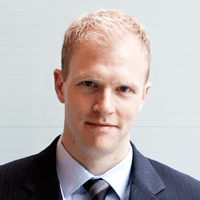When you’re the largest holder of commercial real estate in the great city of Manhattan, there’s a certain exemplary duty that accompanies your holdings. SL Green Realty Corp. gets that. “We’re proud to receive recognition for our efforts to increase energy efficiency,” says Edward V. Piccinich, executive vice president of management and construction and board member for the Urban Green Council. Piccinich says the group’s efforts have continued to gain traction since the appointment of architect Jay Black, LEED AP, to the post of director of sustainability. We spoke with Black to learn what makes him and the SL Green team tick.
gb&d: Fifteen of your properties earned Energy Star Labels in 2011. They’re being touted as some of the most energy-efficient buildings in the nation. What does that mean to you?
It’s indicative of how we operate and our dedication to bringing them up to the highest standards by conducting energy-efficient retrofits. It’s a representation of our program as a whole.
gb&d: Your position as director of sustainability was created in 2011. What has the journey been like?
Back in 2007, we realized we could install LED exit signs and occupancy-sensor devices in tenant spaces. Nowadays, that’s just a standard. Next: what about the lighting in the offices? In 2008, we [upgraded] 22 properties . . . to high-efficiency fluorescent lighting. That project alone saved about $600,000 a year with a 1.6-year payback. It was dramatic. Then we said, if we can do these simple lighting fixes, can’t we do the same to heating and air?

Jay Black, Director of Sustainability, SL Green Realty
gb&d: Where do you think technology is going from here?
One of the key things I’m starting to see is addressing operational efficiencies, giving the engineers and managers of our buildings tools to allow them to optimize the building’s energy performance and run them even more efficiently.
gb&d: In terms of computer management?
Yes. You want your system to notify you when something isn’t working at its peak optimization. In our [New York City] portfolio, we implemented a real-time energy-management program that shows us exactly how the building is using energy in five-minute increments. That was an important piece of information that helped engineers understand when to start up or shut down the building during slower parts of the day. Since installing the program in 2009, cumulatively we’ve saved about $3.5 million, which is an enormous starting point.
gb&d: Who are the regulars you collaborate with on these projects?
I rely heavily on several of our consultants. For the LED retrofit, we installed 7,500 Seesmart bulbs, which we consider to be the best available. We work closely with Code Green Solutions, [who] helped us achieve two LEED certifications. We’ve also been working with Carpet Cycle. We’ve recycled more than 2 million square feet of these products combined—that’s more than 750 tons of debris that we’ve kept out of landfills, which helped us win Armstrong World Industries’ national recycling award in 2011.
gb&d: Do you think the social obligation is as important as the bottom-line savings opportunities?
Of course. One thing I hate is for people to think about us as landlords and that we’re only concerned about energy efficiency because it translates to dollars. The reality is that we’re starting to see that all elements of sustainability can have a positive impact. Last year we launched an education program where we met with every single tenant to explain how the building recycles, their role, and what they can do to improve. We saw on average a 20-percent improvement in recycling.
gb&d: Would you say that’s the missing link: awareness?
Definitely. I’m a huge proponent of dialogue. Most people want to get involved and do the right thing, and if you can provide them with the tools, you start to see a lot of success. It’s all about communicating. What we’re doing isn’t a profound task—sharing our message and talking—but it has a profound impact. Take water. In 2012 alone, we’ve gone throughout our properties and reduced our water usage by 8 million gallons a year just by changing our faucet aerators to half-a-gallon-per-minute flows. That’s it.
gb&d: These are amazing milestones, but it feels like business as usual for you.
It’s about trying to implement methods that people can utilize every day without radical changes in how they conduct themselves. Yet they have positive impacts to both the business and the environment. That’s our guiding principle.

